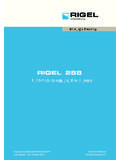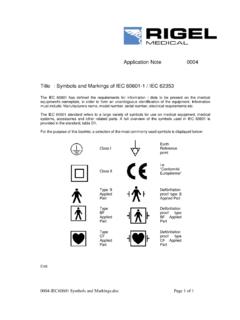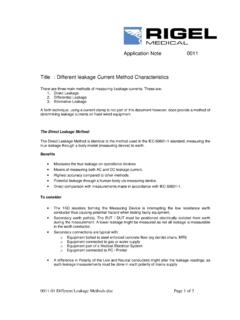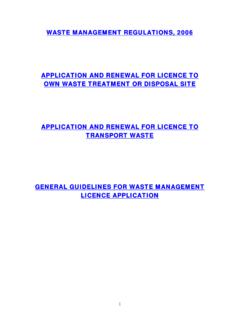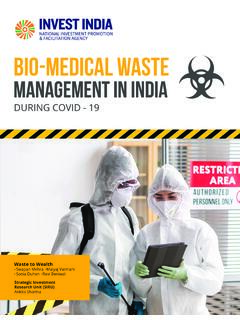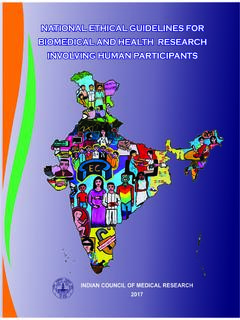Transcription of A Practical Guide to IEC 60601 - Biomedical Test Equipment ...
1 A Practical Guide to IEC MEDICAL PG 2 TESTED, WORLDWIDE. Copyright 2019 - All rights reserved. Nothing from this edition may be multiplied, or made public in any form or manner, either electronically, mechanically, by photocopying, recording, or in any manner, without prior written consent from Seaward Electronic Ltd. This also applies to accompanying drawings and to IEC 6060104 Local adaptation05 Commonly used definitions within IEC 6060106 Symbols and markings07 Visual inspection07 Earth bond (protective earth) testing08 Leakage measurements10 IEC 60601 -1 body model10 Single fault condition10 Earth leakage test11 Enclosure leakage test12 Patient leakage13 Patient leakage F-Type13 Patient auxiliary current14 Record keeping14 Conclusion16 Appendix A - IEC 60601 -1 test limits17 Appendix B - IEC 60601 body model17 Appendix C - IEC 60601 test standards (Table 1)18 Appendix D - IEC 60601 test standards (Table 2)
2 24 Appendix E - Patient environment25 Products in the Rigel Medical range26 Accessories and services from Rigel Medical A Practical Guide TO IEC 60601 PG 316 Appendix A - IEC 60601 -1 test limits17 Appendix B - IEC 60601 body model17 Appendix C - IEC 60601 test standards (Table 1)18 Appendix D - IEC 60601 test standards (Table 2)24 Appendix E - Patient environment25 Products in the Rigel Medical range26 Accessories and services from Rigel MedicalRigel Medical: We know about complying to IEC 60601 -1. After reading this booklet, so will you. At Rigel Medical, we ve been a pioneer of Biomedical test and measurement instruments for more than four comprehensive suite of electrical safety analysers enable Biomedical and clinical engineers to confirm their adherence to a series of industry standards, manufacturers specifications and most importantly, keep patients, visitors, and staff safe in a healthcare environment.
3 Since launching the world s first IEC 601 electrical safety analyser in the 1970s, our user-focused developments continue to place us at the forefront of the industry. Today, our 288+ handheld electrical safety tester (testing to IEC 60101) is the first truly handheld tester of its kind to combine the features of an automatic/manual tester with asset management our commitment to quality, we also offer peace of mind to our customers who know that help and advice is always This booklet is written as a guideline for people involved in testing medical electrical Equipment and cannot be considered to replace the IEC 60601 -1 all reasonable care has been taken to ensure accuracy of the information and reference figures and data have been taken from the latest versions of various standards.
4 Guidance notes and recognised best practices to establish the recommended testing requirements, Rigel Medical, their agents and distributors, accept no responsibility for any error or omissions within this booklet, or for any misinterpretations by the clarification on any part of this booklet please contact Rigel Medical before operating any test part of this publication shall be deemed to form, or be part of any contract for training or Equipment unless specifically referred to as an inclusion within such Medical assumes that the readers of this booklet are electronically technically competent and therefore does not accept any liability arising from accidents or fatalities resulting directly or indirectly from the tests described in this : John Backes, MARIGEL MEDICAL PG 4 TESTED, to IEC 60601 Not all people will understand the dangers associated with the exposure to electricity.
5 It is this danger that has triggered several discussions relating to the safety of all members of the bodies worldwide have acknowledged the dangers of electricity by producing legislation, standards and/or guidelines to control the design of electrical appliances in order to prevent any hazard to the general environment where electric currents pose an acute threat is in the medical treatment and care of patients. Often, patients are physically connected to one or more electrical medical devices for a period of time. In these circumstances it is possible that patients are unaware of their exposure to electrical currents, especially if being treated under full or local anaesthetic.
6 During invasive treatments, the human body s natural protection organ, the skin, no longer provides basic insulation against electrical currents. It is during these treatments that electrical currents, as low as 50mA, can travel through the human body and cause the heart to fibrillate or paralyse the respiratory International Electrotechnical Committee (IEC) has produced a standard to control all aspects of safety directly or indirectly relating to the handling , use or connection to, of medical Equipment . This standard is referenced as IEC IEC 60601 was first published in 1977, then referred to as IEC 601, and handles the electrical safety of both mechanical and electrical issues.
7 It is constructed from 2 parts; IEC 60601 -1 and IEC 60601 -2, each built-up from a number of basic or collateral standardIEC 60601 -1-x (x representing a collateral standard number between 1-12) is the collateral standard; this is the primary standard which has a number of specific standards related directly to the safety of medical standardsIEC 60601 -2-x (x representing a specific standard number between 1-76), are the standards specific to various types of medical Equipment , providing additional information to the collateral standards. Appendix C and D provide an overview of the IEC 60101-1- x and IEC 60601 -2- x booklet describes the electrical safety requirements for compliance with IEC 60601 -1.
8 Although a type of test standard, most of these tests are used to test medical devices, both regularly and following service or adaptationIn many cases the IEC 60601 standard has been adapted into local standards for use in countries around the world. Some examples are EN 60601 (EU), ANSI/AAMI ES60601 (USA), UL60601-1 (USA), CSA no 60601 -1 (Canada), JIS T 0601-1 (Japan) and AS/NZ (Australia/New Zealand).Safety testing at the design stage and at the A Practical Guide TO IEC 60601 PG 5end of the production line is vitally important, but what about when the Equipment enters service? IEC 62353 Medical Electrical Equipment - Recurrent Test and Test After Repair of Medical Equipment Equipment defines the requirements for electrical safety testing of medical electrical (ME) Equipment and systems during routine the need for a unified approach to routine testing, the first edition of IEC 62353 brought together a set number of tests to allow its users to test means of operator protection (MOOP) and means of patient protection (MOPP) dielectric integrity via two distinct leakage current meeting this requirement the IEC 62353 incorporates tests beyond those of type testing.
9 Specifically, it seeks to provide a uniformed and unambiguous means of assessing the safety of medical Equipment , whilst maintaining the relevance to IEC 60601 -1 and minimising the risks to the person conducting the countries have also produced standards or guidelines for the safety testing of newly-delivered medical devices, referred to as acceptance testing; testing during regular intervals, referred to as preventive maintenance tests; and testing following service or repair. Some examples are DIN VDE 0751 (Germany), AS/NZ 3551 (Australia/New Zealand), and AAMI/NFPA 99 (USA).Countries without a national guidance or code of practice mainly follow the manufacturer s instructions or guidelines, which most commonly refer to the IEC 60601 -1 test requirements.
10 In essence, all standards have one thing in common: to control the safety of medical devices for use in the treatment, care and diagnosis of patients and/or used definitions within IEC 60601 Equipment under test (EUT)The Equipment which is the subject of under test (DUT)The device which is the subject of partPart of the medical Equipment which is designed to, or likely to, come into physical contact with the connectionIndividual physical connections and/or metal parts intended for connection with the patient which form (part of) an applied environmentVolumetric area in which a patient can come into contact with medical Equipment or contact can occur between other persons touching medical Equipment and the patient, both intentionally and unintentionally (see Appendix E).
